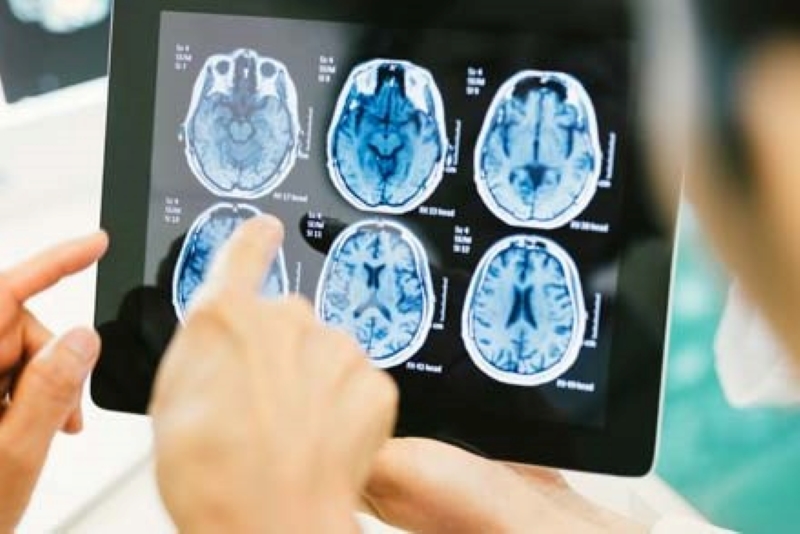
Emergency Room Access: Neurology Emergencies
Let’s talk about Emergencies in Neurology: according to various epidemiological studies, 25-30 % of hospital emergency room admissions are due to acute or subacute pathologies of the Central Nervous System (CNS) and/or Peripheral Nervous System (PNS)
Numerous pathological conditions can lead to direct or indirect CNS and PNS damage.
In recent decades, we have witnessed an extraordinary development and advancement of knowledge in the field of neuroscience.
Nowadays, the neurologist can make use of instrumental investigations, such as computed tomography (CT), magnetic resonance imaging (MRI), neurosonology (Tsa and transcranial echocolordoppler) and other tools such as EEG, EMG, etc., that enable fundamental diagnostic and therapeutic input.
Emergencies in Neurology, the most frequent clinical pictures
The clinical pictures of neurological interest in order of most frequent occurrence in the emergency room are the following:
► Cerebrovascular diseases (Transient Ischaemic Attack (T.I.A.), ischaemic and haemorrhagic cerebral stroke, acute inflammatory vasculopathies).
► Headaches (primary headaches such as migraine and cluster headaches, secondary headaches).
► Trauma (with loss of consciousness, without loss of consciousness).
► Vertigo and postural instability.
► Disturbances of the state of consciousness (metabolic alterations, electrolyte alterations, etc.).
► Other
In the vast majority of cases, medical intervention in an “Emergency/Urgency” context takes place in the TERRITORY: early clinical recognition of focal and/or diffuse damage to the Nervous System represents a crucial decision-making moment; an important example: if the Patient presents the symptoms of a T. I. A. it is mandatory to follow a “Stroke-Unit pathway”.
Read Also
Emergency Live Even More…Live: Download The New Free App Of Your Newspaper For IOS And Android
Low Or Subaxial Cervical Spine Traumas (C3-C7) In Children: What They Are, How To Treat Them
High Cervical Spine Traumas In Children: What They Are, How To Intervene
KED Extrication Device For Trauma Extraction: What It Is And How To Use It
Traumatic Injury Emergencies: What Protocol For Trauma Treatment?
What Should Be In A Paediatric First Aid Kit
Does The Recovery Position In First Aid Actually Work?
Is Applying Or Removing A Cervical Collar Dangerous?
Cervical Collars : 1-Piece Or 2-Piece Device?
Cervical Collar In Trauma Patients In Emergency Medicine: When To Use It, Why It Is Important
What Is Traumatic Brain Injury (TBI)?
Pathophysiology Of Thoracic Trauma: Injuries To The Heart, Great Vessels And Diaphragm
Cardiopulmonary Resuscitation Manoeuvres: Management Of The LUCAS Chest Compressor
Chest Trauma: Clinical Aspects, Therapy, Airway And Ventilatory Assistance
Precordial Chest Punch: Meaning, When To Do It, Guidelines
Ambu Bag, Salvation For Patients With Lack Of Breathing
Blind Insertion Airway Devices (BIAD’s)
UK / Emergency Room, Paediatric Intubation: The Procedure With A Child In Serious Condition
How Long Does Brain Activity Last After Cardiac Arrest?
Quick And Dirty Guide To Chest Trauma
Cardiac Arrest: Why Is Airway Management Important During CPR?
Neurogenic Shock: What It Is, How To Diagnose It And How To Treat The Patient
Abdominal Pain Emergencies: How US Rescuers Intervene
Ukraine: ‘This Is How To Provide First Aid To A Person Injured By Firearms’
6 Facts About Burn Care That Trauma Nurses Should Know
Blast Injuries: How To Intervene On The Patient’s Trauma
What Should Be In A Paediatric First Aid Kit
Ukraine Under Attack, Ministry Of Health Advises Citizens About First Aid For Thermal Burn
Electric Shock First Aid And Treatment
RICE Treatment For Soft Tissue Injuries
How To Carry Out Primary Survey Using The DRABC In First Aid
Heimlich Maneuver: Find Out What It Is And How To Do It
The Patient Complains Of Blurred Vision: What Pathologies Can Be Associated With It?
A Tourniquet Is One Of The Most Important Pieces Of Medical Equipment In Your First Aid Kit
12 Essential Items To Have In Your DIY First Aid Kit
First Aid For Burns: Classification And Treatment
Compensated, Decompensated And Irreversible Shock: What They Are And What They Determine
Burns, First Aid: How To Intervene, What To Do
First Aid, Treatment For Burns And Scalds
Wound Infections: What Causes Them, What Diseases They Are Associated With
Patrick Hardison, The Story Of A Transplanted Face On A Firefighter With Burns
Eye Burns: What They Are, How To Treat Them
Burn Blister: What To Do And What Not To Do
Ukraine: ‘This Is How To Provide First Aid To A Person Injured By Firearms’
Emergency Burn Treatment: Rescuing A Burn Patient


